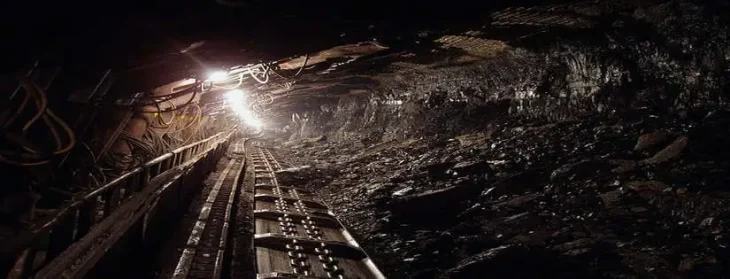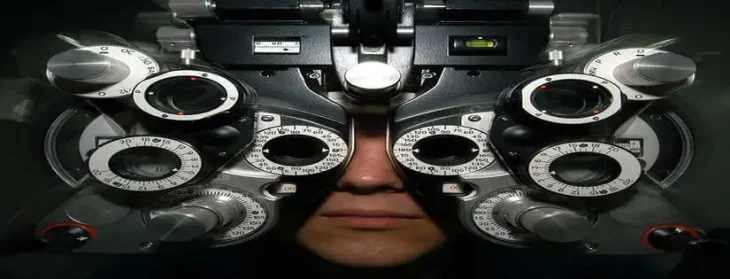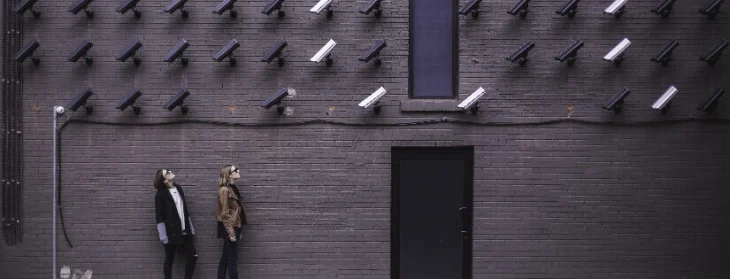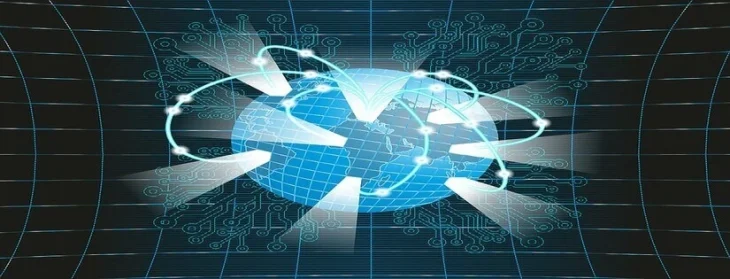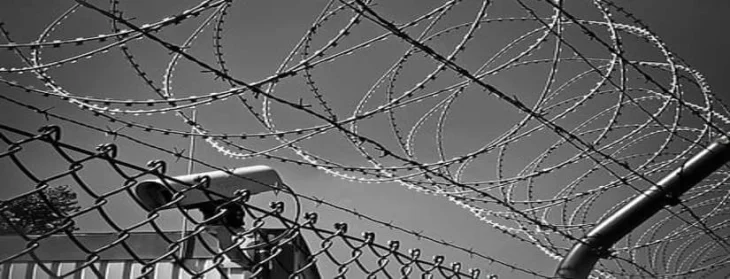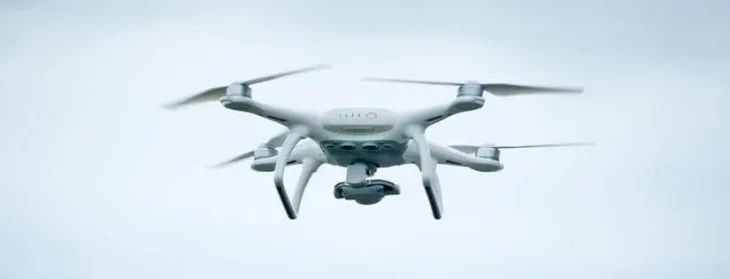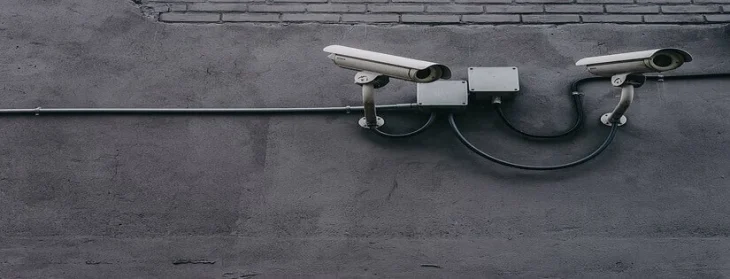Intelligent Vision in the Mining Industry
In the year 1996, Martin Cruz Smith wrote on his novel, Rose, the following lines: “Then there was the whole concept of coal mining, which is a culture unto itself, the most dangerous occupation in the world, and which draws and develops a certain kind of man.” The occupation of mining, be it coal or gold, has remained one of the least sought-after professions in the world. Considering the hazards and the hard-work it brings, it is of no wonder that it was always well suited for a certain breed of men. Hazards are a common occurrence under the mines. Many factors contribute to the danger in the mining industry. They can be: Now that technology is growing rapidly bringing new solutions to the forefront, it has smartened up the safety, efficiency, productivity-related concerns in the mining industry. Artificial intelligence has been introduced in this sector some years ago, but AI could only sort out the repetitive work. There is a necessity for a system that can expand the scope of automation in the mining industry. What if there is an automated supervising authority that tracks, traces, records, predicts, and keeps overall watchful surveillance on every mining section? Well, an artificial intelligence-powered intelligent vision-based system could be a deciding factor in this regard. Here is how intelligent vision-based system could revolutionize the way the mining industry operates: Automated miner tracker A crucial aspect of such an intelligent system would be acting as “machine supervisors”. That means the computer vision can capture snapshots and videos with the help of smart cameras, reducing the need for human supervisors to oversee mining tasks. The shots and videos would be stored, analyzed later to monitor every mine worker, and implement necessary steps to improve productivity. Such vision solutions could help in the evaluation of a worker’s activity from day to day and monitoring various trajectories of people to strengthen security and process-related concerns. Tracking mining equipment and automation Vision-based intelligent tracking can track scheduled task status, real-time production, map the operator and equipment location, predict productivity based on analyzing underground mining sites, and even churn out safety instructions. Seems far-fetched but this is the future. Threat detection This is a grave concern in the mining industry. Any sort of miscalculated step, a mishap, or deliberate activity could put lives in jeopardy. A vision-based system could negate that by determining outside threats such as any callous action that puts men and machines in danger, detecting any unusual vehicle activity, or even catching unscrupulous personnel or presence of weapons/firearms. The immediate call would be notified automatically to the security team or police force. Smart database The most prominent facet of intelligent vision is its immense database and its ability to read, process data captured. It can collect and churn out useful data and save them in a database server. The data is processed into various data inputs like MySQL, pdf, or excel as desired by the mining team. The system can automate data pipeline processes and form a readable human-friendly interface. This improves data quality and transparency. The biggest catch is, it would save a lot of time and reduce human interference. Identification and classification of raw materials This is where intelligent vision could be a real game-changer. Instead of spending hours and days in manually reviewing image samples, the implementation of such solutions would fasten up the identification and classification of rock/ore samples. A highly trained AI vision could even determine the sort of compounds discovered just by evaluating drilling data. The next step would be labeling incoming compound samples just by scanning images or running stored information. This segment of intelligent vision has the potential to overhaul the mining industry. Miscellaneous Here are a few more ways computer-based vision system could change how mining operations are conducted: Powered by data and AI, the computer-based intelligent vision has immense potential to change the mining game forever. It is to be noted that the above-mentioned possibilities are not the only ones to consider and there could be more uses of such intelligent solutions. Smart collaboration makes smart results and the industry has ample amount of scope to deliver just that.
Read MoreComputer Vision – The past and the present
Artificial Intelligence or in short AI happens to be that one game-changer that has all the means to alter the world of technology and innovation in gigantic proportions. Here, we are looking into one of the most powerful and captivating facets of AI which is Computer Vision, something that has permeated in our lives but most of us do not have a clue about it. Computer vision involves mimicking the intricacy of the human visual system by machine and identifying and processing images and videos in the same way that humans do. Credits go to advancements and innovations in artificial intelligence, deep learning, and neural networks, which has propelled the field across multiple successive levels and even surpassed humans in tasks like detection or labeling objects. Data generation is another driving factor behind such a rapid growth of computer vision, as we generate large amounts of data every day. The Past Although computer vision has tonnes of applications today which are growing exponentially, it first appeared in the 1950s. After almost two decades of experiments, it was in the 1970s when it witnessed commercial usage which was to distinguish between typed and handwritten text. So, what prompted such an experiment? It stems from a question related to Neuroscience which is how do our brains work. Let us climb up from the basic purpose of computer vision. It is all about recognizing similar features. Hence for a machine to understand such pictorial data, it needs to feed on thousands to millions of images. The next step is to run them through specifically made software processes, or algorithms, that prompts the computer to clamp down and identify similar patterns in all the entities. Quite revolutionary for its time but it was a painstaking task and required lots of coding and other efforts by the creators and their operators. Also, this was before the advent of deep learning, so the scope of computer vision was limited. Let us take the case of facial recognition, and here is the conventional way to do that: Remember, in the early days, there was little automation involved and hence everything needed to be executed manually. The Present The advent of deep learning presented a different approach to fixing computer vision issues. It removed the aspect of manually coding every single rule into the application. It introduced specific features, like small sets of applications that can detect and identify particular attributes in images, like its dimensions. The features then apply algorithms such as logistic regression, linear regression, decision trees, etc to identify patterns, classify images and detect objects in them. Machine learning made it quick and it took considerably less amount of time to decipher an image. Today, we have ultra-fast processors and chips with related hardware coupled with a reliable, fast internet, and of course, the cloud servers, making the entire process extremely fast. The advantage of merging cloud with computer vision is that there is always a ready-to-use repository with millions of processed images, hence this enables us to build upon previous work rather than starting from zero. As the AI industry keeps on evolving, tasks that used to take a week take 5 minutes today. Some computer vision for real-world applications takes microseconds today. Uses of intelligent vision Face recognition Facial recognition is probably the best application to come out of computer vision. Facial recognition involves algorithms that identify facial features in images and runs them through the massive repository of stored images to compare. Facial recognition first found its niche in the police department and other law enforcement bodies who use this technology to identify criminals and suspects in video recordings. Now facial recognition is found in handsets and other consumer devices that authenticate owner identities. Social media uses facial recognition to identify and verify users. Augmented reality Augmented reality or AR is a branch of technology that allows commercial computing devices to project upon and embed virtual entities on real-life features. Computer vision embedded in AR detects real-world objects to identify them as displayed on the device screen and place a computer-generated unreal entity. Self-driving cars Self-driving cars are a recent phenomenon and they are making a lot of news lately. Undoubtedly, it has been made possible by the advancements in computer vision, which is an integral part of self-driving vehicles. Computer vision helps self-driving cars to be aware of their vicinity. The smart cameras fixed on these cars capture real-time footage from different angles and feed it to the plugged-in repository. The captured footages are processed to ascertain different factors on the roads such as traffic signals, other cars, and pedestrians, lying objects, roadblocks, and road features. The self-driving car simultaneously steers its way through the roads, while avoiding hindrances, and safely making its way towards its endpoint. Self-driving is still in the build-up stage and only time will decide how far it evolves. Industrial fleet management This is where intelligent computer vision finds a significant placement. From identifying and tracking all the automotive vehicles in a fleet along with their operators to monitor the routes taken, pit-stops, operator behavior, prediction of circumstance, streamlining the supply chain, reducing manual labor costs; the industrial field has benefitted immensely from computer vision and it is an ever-evolving process. Computer vision has put a benchmark on the world of technology and certainly is an astounding feature to come out of AI. As AI keeps on evolving at a rapid pace, computer vision is becoming increasingly mainstream in our daily lives. What is more amazing is that AI is yet to reach its prime and computer vision is just the tip of the iceberg for whatever that is about to come.
Read MoreSmart camera network – yesterday and today
The last decade saw a remarkable expansion of smart video surveillance networks. There is a worldwide commotion about smart video cameras that use facial recognition technology to record and track every single move the public makes. Governments in some countries have installed millions of surveillance cameras in every nook and corner in a bid to track any crime or mishap. Companies and even private homes are plugging in their cameras into police networks. In addition to that, the meteoric advancements made in the artificial intelligence (AI) field have brought in new edge and capabilities to harness security surveillance potentialities. The emergence of all-seeing smart camera networks is a ground-breaking development that aims to help and support law enforcement agencies to track the suspected, keep records, solve a crime and make the society a decent place to live in. Although law enforcement agencies have been using CCTV cameras since as far as the ’90s, there has been a sharp rise in smart cameras and sensors past few years. What is the reason for such emergence though of a smart video surveillance system? To understand the phenomenon, we have to take a walk through its history, the prime players that led to such a massive development among cameras. The early years In the initial years i.e. in their first decade since introduction, the humble CCTV cameras were low-resolution devices that recorded onto tapes. They were mostly deployed by businesses or city authorities to film a specific area of interest. Although CCTVs saw their place in public, it was not widespread like how it is today. Collecting footages from camera records would take hours before coming into a fruitful solution. In the late 1990s, a video surveillance system stepped up a level with the first internet-enabled surveillance camera being introduced to the market, which converted moving images and recorded clips into digital data. The video management system or VMS was introduced later which organized and allocated video information into databases. Although it is possible to plug-in large numbers of surveillance cameras into a VMS, it remains an expensive task. As a result, city councils came up with a unique idea, which was urging businesses and privately owned residences to install their cameras into the law enforcement server. Now that the number of cameras on police networks are thousands in number and only a small team of operators to watch them, law enforcement agencies face a new issue of concluding such a vast array of captured footage. This is where analytics came in. Video analytics is a revolutionary aspect that came around 2006, which worked on gathering all the footage, aggregating the images, and summarizing long videos. Video analytics itself came with three specific intents: Behavior recognition: It includes capabilities like violence detection, emotion recognition, fall detection, fire, and smoke detection, erratic behavior, loitering, jaywalking, freeway toll fare evasion, and even lie detection. Object recognition: It includes capabilities like recognizing faces, cars, weapons, animals, fires, and other things, as well as human characteristics like age, gender, and hair color. Anomalous behavior recognition: This field of detection works by focusing and recording a fixed area for a specific period and determining the circumstances to be deemed normal for that scene. If the camera spots something unusual, it flags the incident for attention. Video analytics system capabilities range from searching and analyzing throughout recorded footage or real-time streams to highlighting individuals or objects as it traverses a smart camera network. Video analytics covers a wide array of information retrieved from smart camera networks and converts them into meaningful data. The recent years CCTV surveillance has emerged into a multibillion-dollar industry that encompasses a wide range of industry verticals. It served as a major overhaul in police and law enforcement, found its place in health care facilities and educational institutions, became an integral part of any retail or commercial setup. CCTV surveillance and monitoring gave rise to a specific set of vendors who excel in providing such services. It incorporates and drives the whole ecosystem of tech companies such as Amazon, IBM, Microsoft, Cisco, and Verizon who have started to merge such networks with other tech verticals like broadband connectivity, cloud services, or video surveillance software. The UK has over 6 million video surveillance cameras installed throughout the country as of 2020 With the private and public sector eyeing for an expansion of video surveillance, smart cameras network has become a new cash cow. It is predicted that there will be something around 50 billion cameras in the world in the next 30 years. Although video surveillance started as a staple in law enforcement, private firms have started diversifying and driving such systems and/or products towards the commercial sector. The retail industry benefitted a lot from this system in particular, as they could now monitor queue length, amount of footfall, analyze shopping patterns, and chalk out floor layouts as per their convenience. Both public and private sectors agree on the further implementation of smart video surveillance. In the United States, smart camera networks are just emerging, and with the advent of “Internet-of-things” or IoT, the smart vision surveillance network is amplified into many folds to give precise and as a required outcome. Moreover, their installation and applications are being facilitated by almost every tech industry out there. In future cameras, networks will be required to respond to any given situation autonomously or with minimal human interaction.
Read MoreThe emergence of computer vision market
Computer vision, a sector in automation and computer science, allows for imitating human vision and acts upon the factor of perception based on received images. Computer vision and artificial intelligence are highly intertwined. This branch incorporates AI to process images and videos and is used in controlling industrial automation processes, self-driving vehicles, detecting anomalies and flaws, predicting events, medical image analysis, etc. Advancements in AI is directly proportional to technical upgradations in computer vision technology. But AI is not the only factor that effects computer vision. Economics suggests, increase in demand fuels an increase in technological prowess. Such is the case regarding computer vision where the market plays a key role in its growth. Rise of computer vision Computer vision has witnessed rampant commercialization in the past decade and is being deployed in a wide array of industries. Not surprisingly, these were just design concepts a few years ago but market demand finally caught up and had the stream on a full swing. We can attribute such rapid global adoption of machine vision to the following factors: The x-factor of the computer vision system is its ability to process large amounts of graphical information in just a fraction of time. This is equivalent to two dozen humans tirelessly running every bit of information. This quick processing ability is what drives computer vision into some of the major sectors in the world. Especially in the manufacturing sector, computer vision has helped it reach new milestones and set benchmarks by producing defects of fewer products. Moreover, as more and more industries embrace robots, there has been a rise in the usage of computer vision in such robotic systems, thereby dishing out vision-guided robotic systems. As fields such as automotive, pharmaceutical, and food-beverage are key users of the robotic system, they are also fuelling demand for machine vision solutions. Depending on varied requirements regarding quality and safety, a computer vision system incorporates various hardware accessories to capture images, clips, and analyze them. These along with the AI and deep learning technology lends operational control to devices that capture and process images and execute specific functions as required for decision making. Some key hardware components include, if not limited to smart cameras, image sensors, lighting, vision processing, and communication devices. Computer vision in the global market According to leading market research reports: “Global Computer Vision market revenue is estimated to grow across different industries, increasing from $2.9bn in 2018 to $33.5bn by 2025” Here is how machine vision is increasingly finding its presence in different fields: The computer vision technology genre continues to experience frequent and relentless transformation, all the while paving way for new technology upgrades. The integration of deep learning and AI with CV solutions has remarkably increased the level of effectiveness of the technology. No wonder computer vision has quickly seen itself in every other industry vertical. Smart computer vision is regarded as a high potential technology worth investing upon, and judging by the current scenario, the future looks bright.
Read MoreHow intelligent vision tracking helps forklift safety
When you step into a warehouse, you are most likely to witness miniature trucks moving around carrying materials from one place to another called forklifts. As much fun these little vehicles may seem, forklifts are associated with almost 90,000 accidents every year in the United States alone, out of which one fatal accident occurs approximately every 5-6 days. Some of the more common examples of forklift accidents are such as being crushed by forklift or forklift falling off an edge with the driver receiving serious injury. The downsides of warehouse vehicle activity have been analyzed and forklift has undergone significant improvements over the last decade, all thanks to the introduction of intelligent vision tracking forklift monitoring system. These systems are capable of tracking, recording, and projecting important real-time data to warehouse supervisors, and vehicle operators, which ultimately leads to minimizing workplace injuries and damage-related costs. To ensure the seamless functioning of such systems and employ the intelligent tracking feature, it is vital to understand their operation and perks they bring in for a business. Intelligent computer vision for forklift monitoring The key player in vision tracking of forklift is Artificial Intelligence (AI). AI applies two aspects into this namely: computer vision and deep learning. Computer vision refers to camera caught images processed in software. The mini-computers and cameras are installed and they provide their connection to the cloud for real-time alerting and reporting. They observe and record all the action along with taking pictures. Unlike security camera which requires humans to review thousands of images over long hours, computer vision implements AI to markdown significant events of interest/concerns such as a vehicle left unattended for a long time, debris in the truck bed, a person not in proper attire in the designated area, etc. The deep learning helps us to detect, recognize, and anticipate probable scenarios with absolute accuracy and reliability. The system can distinguish a person in an image from a pile of goods. The system is also able to recognize a forklift operator’s state by focusing on his body language and churning out possible outcomes. From identifying common carelessness such as hands not on wheels to keeping a check on warehouse safety standards, intelligent vision forklift monitoring system acts as an artificial warehouse manager of its own. The system not only detects and records an incident but also analyses and learns the reason for the same. The captured data helps it to identify the same occurrence again in the future and display a warning signal if it anticipates a similar incident is about to repeat.. The benefits of intelligent tracking and monitoring of forklift The benefits of intelligent tracking and monitoring of forklift Forklift monitoring has witnessed big changes over the years with the introduction of access settings which includes swipe cards or access pins to prevent unauthorized or unwarranted usage of forklifts. The constant surveillance and data capturing means lesser chance of mishaps and overall better security in the warehouse. This compels forklift operators to be accountable for their job, hence increasing productivity. A breakthrough aspect of smart vision tracking is the amalgamation with the Internet of Things (IoT). As a result of IoT, forklifts come with varied hardware and software products such as LCD screens. These days, it is mandatory for the forklift operator to abide by compliance and safety process and IoT happens to be one of the key points in a pre-start checklist. Giving a wrong answer or any shortcoming in compliance will have the forklift vehicle locked, preventing any further usage by the concerned driver. The following points summarize how computer vision tracking of forklifts is raising safety standards: Intelligent Forklift tracking systems have created a more professional, smooth, and safer workspace in the industry. The data from these systems enable supervisors and managers to measure key performance indicators and check safety. Unmanned AI-driven forklifts are already under usage on a significant scale in many countries. With years, more and more high-tech monitoring systems are going to come with increased efficiency. www.onetrack.ai/post/how-computer-vision-and-deep-learning-improve-forklift-safety www.inboundlogistics.com/cms/article/holman-logistics-uses-artificial-intelligence-to-increase-forklift-safety/ www.lencrowforklifts.com.au/news/understanding-forklift-safety-and-monitoring-systems-effectively-in-your-business/ Community, Nasscom Insights Initiative
Read MoreThe Machine Vision industry: Track and Trace
The industrial revolution sure did lay down the importance of manufacturing’s primary aspect, supply chain, and logistics. The constant manufacturing of goods, shipment, storage, the influx of commodities, tracking, tracing, labeling is quite the herculean task. Historically, tracing a product through a complicated supply chain has been a time taking and sometimes painful process, akin to finding a needle in a haystack. Whether it is a complex array of a global supply chain or individual process in a single facility, tracking and tracing were incredibly difficult, until a modern technological solution known as Machine Vision came up. Machine Vision systems, which are also known as intelligent vision systems, facilitate product tracing through a nexus of supply chains while also setting up an automated system to gain accessibility into the production of both self and suppliers/customers. The Growth of Vision-Based Track and Trace Solutions Machine Vision track and trace market are estimated to reach a value of $3.90 billion by 2023, as per a reputed market research firm growing at a compound annual growth rate of 19%. Much of this estimation can be attributed to regulatory pressure and accountability, to prevent product recalls and quality. As per global association for vision information (AIA), industry initiatives such as The Produce Traceability Initiative, are encouraging for further implementation of vision-based track & trace applications by pulling in several parties from various domains and envisioning a more effective vision-based industry. This growth lays down a generous amount of opportunities for innovative machine vision OEMs to mark their territory in such a rapidly growing industry. The underlying principle of vision tracking Machine vision track and trace solutions have introduced the most inclusive way to identify & track commodities as they move through complex global supply chains. As a result, there is a growing number of different industries that are adopting machine vision as their one-stop solution for track and trace operations. For example, due to occurrences of instrument misplacement and hospital-contracted infections, the medical device industry has implemented track and trace systems to ensure safety and wellbeing. The food and beverage industry has extensively used machine vision track and trace to record point of origin of products and ingredients to address quality issues and rectify them. Typically, pharmaceutical firms observe stringent rules and regulations to ensure their products can be tracked and traced from the production line to the end-user. Here is how they implement vision-based track and trace: Apart from track and trace, the manufacturing industry has witnessed a vast application of diverse machine vision solutions in many ways As machine vision technology makes its footfall in more and more industries, the track and trace solutions are most likely to be at the forefront of this growing presence, contributing to supply chain visibility and product innovation. This pioneering technology has trailblazed its way towards the manufacturing industry vanguard and proved to be a much sought after system solution to scale all sorts of operations. Reference: www.devteam.space/blog/10-examples-of-using-machine-vision-in-manufacturing/#eight Global Association for Vision Information
Read MoreThe everchanging surveillance industry
Let’s get this straight, when you possess something, you are bound to keep an eye on it. Sometimes track, monitor, and overall, keep a check with prying eyes. The era of human resources such as watchmen or guards with their watchful presence is over. Security and surveillance have come a long way. Amidst the everchanging world of technologies, the surveillance market has changed dramatically over the last decade. The times of CCTV cameras to secure business has paved the way for more complex systems designed to address modern-day necessities. As the cameras evolve with changing times, the video surveillance camera also keeps on evolving, with more advanced embedded analytics. The catch is that it is reducing the size of storage infrastructures but increased the cost and technical complexities of the camera. With an emphasis on the rise of smart video surveillance cameras, IDC believes the market is likely to surpass $15 billion by 2025. By the way, such rapid advancement is not limited to just fixed surveillance cameras. The journey of drone, from just a flying toy to one of most pioneering tools, has catapulted it at the forefront of the surveillance industry arena, and a drone’s importance has increased several folds. The new era of video surveillance Market research reports suggest that global video surveillance industry generated a revenue of $37 billion in 2018 and is estimated to grow at a rate of 17% in a span of 5 years to achieve $77.21 billion by 2023. With the increasing demand of the internet protocol (IP) cameras for home and retail security, the video surveillance market has witnessed a spike in growth and is expected by three folds over the next decade. With more necessity for crystal image resolution and perimeter surveillance, adoption of intelligent video surveillance cameras has increased A recent report published that retail crime is now costing the industry over $600 million a year. This is one of the deciding factors that propelled the surveillance and security and drone sector to a new level to keep up with modern-day market demands. As criminals have become a lot more upgraded, the companies were losing out as a result, and this pushed for more complexities in the surveillance industr In a bid to counter such coming-of-age criminal activities, the surveillance industry, along with its technology partners, needed to improve and upgrade system capabilities. The single-camera and tape recorder were not enough to meet such demands in the 21st-century. Now, industry leaders are required to bring a whole lot more to the table than what was expected just a decade ago. In a bid to counter such coming-of-age criminal activities, the surveillance industry, along with its technology partners, needed to improve and upgrade system capabilities. The single-camera and tape recorder were not enough to meet such demands in the 21st-century. Now, industry leaders are required to bring a whole lot more to the table than what was expected just a decade ago. Companies and even government establishments must fully evaluate their primary objectives, end goals, and understand the technology, both software and hardware, required to achieve the aforementioned goals successfully. Storage, benefit and Internet of Things Recently, after analyzing the future of data and associated factors, Seagate and IDC published a whitepaper stating that the worldwide data will explode to more than 100 zetta bytes by 2025. One of the significant reasons for this surge in data is the emergence of connected devices because of the IoT (Internet of Things). With the increase in the number of transactions being created and tracked, it is pivotal to ponder upon how such a massive amount of data can be managed. There is a good investment in connecting devices these days and more and more organizations are inspecting how these IoT devices will function, interact with people, what other opportunities can be created as a result and what are the areas that need improvement. There have been discussions about smart cities, such as Tokyo or Seoul, and how information relayed in real-time through connected devices and cameras would help provide insights to planning personnel and emergency units to chalk up better plans for public services. The video security and surveillance industry has evolved into a much more advanced and complex network system than what it was a few decades ago. For example, retailers have resorted to heating mapping sensors, and data from cameras are used to scrutinize real-time footfall, which helps in supervising and overseeing the layout of their stores to provide a more enjoyable, secure shopping experience. However, there are few factors hinder the growth of this industry and it include: Businesses must take into account a lot more than what surveillance camera they’ll be using, which includes the kind of hardware & accessories required for a particular task in hand if they wish to take advantage of modern surveillance benefits. For organizations that prefer to outsource their surveillance department to a third-party vendor, they must find the right strategic partner who fits the requirements and identify what storage base is suitable for them. This ensures the application of modern surveillance and analytical benefits which should positively impact their employees, customers, and business. The surveillance industry is evolving drastically in a much more sophisticated and complex way than it has in the previous decades. For businesses to take advantage of modern surveillance system benefits, they need to: Reference: https://www.marketresearch.com/BIS research Dr. Craig Donald, http://www.securitysa.com/8916a
Read MoreThe role of computer vision-based tracking in industrial vehicle management
In the 21st century, amidst the fast-paced competition, every organization strives to achieve a drastic progression in its sales force productivity, by adopting new methodologies and trends. When talking about industrial vehicle management, to maintain a well-functioning & robust fleet of vehicles which are uninterrupted in their daily operations, just a keen eye for details is not enough. It also asks time-tested and/or innovative skills and years of experience to keep up with the demands of the job. Industrial vehicle management presents its challenges. Unauthorized trips and poor route management are just two of the many issues that can act as a stumbling stone towards a company’s financial journey. Although GPS has enabled tracking of vehicles, thanks to IoT, it is unable to predict the possible set of events by taking every parameter into account. Computer vision-based tracking and surveillance comes in to cover this area. Many organizations today are opting for AI-powered vision-based tracking and surveillance to enhance their vehicle management solutions. Companies are now embracing such features as they are significant to their business. How? Computer vision tracking and surveillance gather data, retain information, and the AI associated can run them into analytics and predict a possible outcome, even multiple outcomes, based on present conditions. Why is intelligent vision tracking so important in industrial vehicle management? It is a significant portion of the logistics and supplies chain industry today and here are the reasons why one needs to invest in computer vision-based monitoring in industrial vehicle fleet management: AI-powered Vehicle Monitoring Supply chain and logistics involve precise planning and proper execution of efficient transportation and storage of goods from start till the point of its delivery/consumption. Hence, monitoring flawless vehicle movement is vital in ensuring safe & secure deliverance. The AI-powered real-time monitoring not only ensures constant management insight into the last leg of the delivery, but it also tracks and retains every piece of information about vehicle status, operator condition, and everything that leads to the result. Reformed Vehicle Routes In supply chain & logistics, careful consideration is needed while mapping routes. The industrial vehicle management companies should consider unfavorable weather conditions, bad traffic, long or fuel refill stations. However, with all the planning on the table, one cannot simply predict or tackle the barriers. This is where computer vision aided real-time monitoring becomes useful. It provides information with the help of smart cameras and sensors, which allows companies to optimize their routes taking the above-mentioned factors into account. They can also allocate vehicles out for specified tasks depending upon vehicle maintenance schedules, real-time vehicle status, etc. Optimizing routes with the help of computer captured information not only saves time but saves money. Reduction of Cost with Analytics In the modern-day competitive market, where profit margins are paper-thin, organizations seek greater insights about employee’s work ethics to get an upper hand on other competitors. Staying updated about vehicle operations and their operators is the key. These operations generate a vast amount of data which includes vehicle health, routes taken, fuel maintenance, and the vehicle operator’s performance. After intelligent vision captures all the information, data analytics allows for leveraging the same to cultivate multiple scenarios and outcomes. With smart cameras on board, one can check their shipment in any part of the globe. The AI calculates and provides probable vehicle status such as the start of the journey, the rest stops it is supposed to take, and the approximate time of task completion. One can also keep a tab on driving skills, signal jumps, frequent brakes, speed checks, and many other aspects. Analyzing all that allows the management to inspect patterns at play and modify strategies accordingly. Higher Customer Satisfaction As mentioned in the previous point, computer-based vision tracking helps in retaining information that could be used to boost the consumer satisfaction index. Along with more customers in the fold, there is also a matter of goodwill and preference in the market. It retains customers and helps increase market reach. This only means a greater return on investment. Improved Transparency A prime advantage of an intelligent vision vehicle tracker is that it facilitates both aspects of a task, the manufacturer, and the end-user. Both parties are in a continuous status loop concerning the transit and deliverance of commodities, as both have access to real-time details. This enhances & improves the transparency between two parties. With such access to information, all parties remain on the same page. Highlights Vehicle Operator Vision tracking and surveillance also yield significant data on driver behavior, especially on the road. Usually, drivers resort to speeding, idling, and unwanted braking habits and they think they can always get away with. Computer vision cannot only help one verify work hours, but they can also predict the possibility of idling, unwanted brakes, and even foretell a driver’s mood after running everyday data through its analytics. When a driver knows he is being continuously monitored, they tend to be more conscious and responsible towards their driving and the task they are assigned to. Technology has always worked for no other reason but to make life easier, speed up operations, and revolutionize how most things are done. With the introduction of computer vision-based tracking and surveillance to fleet management domain, fleet supervisors and managers now have a way to track, analyze, inspect whatever they are in charge of, and prevent any problem that might end in damages or losses. Computer vision is slowly but surely here to replace GPS tracking, while increasing ROI and increasing productivity, hence lowering the cost of investments while increasing profit.
Read MoreVision-based surveillance – Top technological trends
Rampant competition, ever-evolving technology, and growing consumer needs drive every industry to the next level where it can upgrade and mold itself to be a better establishment. It was in the last decade, that the industry about surveillance has witnessed massive upgradations. The days of simple CCTVs are no longer a viable option anymore. Businesses are looking into incorporating more technical aspects into surveillance, something which guarantees top-notch security and a more fluid work process. Let us have a look into some of the latest technological trends which are being brought into the surveillance fold: Image Processing & Classification The prime facet of surveillance is capturing real-time live events. And this is where image processing and classification comes into play. Of course, specifying image classification with the help of algorithms requires a big code and even a bigger time-period. However, with the advent of data-driven science, computer vision researchers have devised a quicker and tested method to address this issue. Bear in mind that a set of images gets tagged under a specific category. So instead of putting what every category would look like in a code, the researchers feed the computer system with hordes of images for each image class and then write algorithms that are capable of identifying such classes by their visual appearance. The most popular image classifying algorithm structure today is Convolutional Neural Networks (CNNs). CNN is fed with a wide array of imagery which then classifies them. Image processing & classification can help the surveillance industry by identifying instant real-time shots and identifying them instantly, without the need of a human. Object Detection & Tracking Usually, for detection, objects are put inside bounding boxes which helps the AI (Artificial Intelligence) to detect the object in an image frame. Unlike classification which applies to a single dominant object, detection involves applying classification to many objects. But to classify and localize like that, one needs to apply CNN (mentioned above) to a plethora of different crops, scales, and locations of an image. Such a method is expensive from a computational standpoint. Neural network researchers have come up with a unique solution to the above-mentioned issue. Instead of classifying and localizing each object, they have come up with assigning image regions that are likely to contain objects. As a result, the AI-enabled surveillance processer to detect objects faster as it knows where to look at and it reduces the computational requirements. It is faster, requires fewer inputs, and has less time investment. While detection is pinpointing an object, tracking is about following a specific object of interest, or multiple objects, in a specific scene. Object tracking finds application in video and real-world interactions where an object is detected initially and observation is established. According to the observation model, object tracking is divided into 2 classes: Generative process: This method utilizes the generative model to define apparent characteristics of an object while minimizing reconstruction error during object search Discriminative process: This method distinguishes the object from its background, hence making the process more robust. The discriminative process is largely used as the main method of tracking where a set of candidate objects in a frame are detected and then AI reads up and identifies the wanted object that needs to be tracked. Deep learning is an integral part of this process. Object tracking helps the surveillance system to not only pull out the wanted object from a frame but also helps in setting a tracking motion against it. If you are running a fleet of vehicles but you need to keep an eye on a particular vehicle for some purpose, object tracking involved surveillance system is surely there to help you; and the catch is, it doesn’t require any human effort. Cloud Computing Before, we had safehouses and vaults. Then we made servers and database installations to preserve every business data. With the emergence of cloud computing, businesses are increasingly resorting to the cloud-based model. Some are even shifting their entire infrastructure to the cloud. How does surveillance benefit from cloud computing? Cloud computing involves a centralised data center, connected with a wide array of Internet of Things (IoT) devices. With such setup, it is a given that there would be an avalanche of data every single day. Though the surveillance industry has seen significant design amendments in the storage system, the vast amount of data can be overwhelming. New cameras and sensors have been manufactured, which can capture and process images without having to transfer them to the central data center. These state-of-art surveillance devices act according to a new form of cloud called edge computing. Edge computing refers to a system where captured image data is processed right in the cameras/sensors before transferring the data to the data center. This helps in reducing bandwidth issues, plus data can be encrypted thus addressing security and privacy concerns. Thus, the surveillance industry can store tonnes of necessary data in the cloud while not upsetting its storage potential with an unnecessary burden. Cybersecurity Cybersecurity remains a prominent threat to this day. No sector doesn’t ponder upon developing a robust cybersecurity system. A cybersecurity breach is the fastest way to damage a company’s relation with its customers/stakeholders. This issue is not going away any soon as cybercriminals (sometimes sponsored by the state itself) keep on taking their game to a step higher and are always looking to find holes and exploit vulnerabilities. The problem lies in the fact that companies need to adhere to industry regulations and as a result, they fall behind such cybercriminal organizations who are well organized and innovate much quickly. With the number of connected devices, the possibility of such attacks become more frequent, as the number of insecure network endpoints also increase. The supply chain has been a vulnerable area for cybersecurity breach and hence, companies and surveillance system manufactures are investing more and more on cybersecurity and network warfare to prevent any breach of hardware or software and theft of confidential data. Smart Tech
Read MoreComputer vision and its impact on ROI
If you own a business or been a part of one, you know it very well that in a competitive world, every organization strives to attain a substantial progression in its return on investment by incorporating new processes and technology trends. If your business requires an unhindered and well-operated fleet of vehicles for daily activities, you need more keys up your sleeve than just a keen eye. Fleet management comes with several challenges. Unauthorized trips and poor route management are only two of the many issues that can financially hit the whole business. However, technology has laid down a unique system to prevent such setbacks while significantly improving operations: The computer vision-enabled tracking system. Computer vision-based vehicle tracking systems and fleet management solutions are fast catching up, and many companies are increasingly adopting it. Such a smart vehicle tracker not only improves operations but also boosts sales, customer service, and reduces expenses. The sales departments in many firms are now embracing smart vision-based tracking features as they are proving to be very important for their business. The return on investment reaped from such a tracking system makes utilizing this technology an excellent idea for your business. The benefits can range from money saving to increased customer satisfaction and everything in between. Over time, machine vision-based tracking can offer numerous services that could ultimately pay for themselves. The computer vision system provides insights into employee behavior, how a piece of equipment is being used, and the efficiency of the supply chain, thus making it easier to identify opportunities to improve the workflow, increase security, and boost customer satisfaction. How computer vision help boosts Sales Incorporating computer vision-based vehicle tracking and monitoring brings many beneficial factors with it. Let us have a look at them: Cutting Operational Expenses Incorporating computer vision-based vehicle tracking and monitoring brings many beneficial factors with it. Let us have a look at them: One of the prime concerns and goals of any successful business is to derive maximum output with optimum input. Increasing ROI by cutting operational costs is a big factor, and computer vision plays a significant part in it. Intelligent monitoring helps in finding the shortest and most efficient route possible. Such precise planning can help avoid congested roadways and paths under construction, thereby minimizing travel time and reducing fuel costs. Smart vehicle monitoring also provides an ample amount of information on vehicle operator activity, which is scrutinized to form new rules and policies that promote & encourage economical driving. Computer vision helps in determining which vehicles require maintenance to avoid sudden breakdowns, unexpected repairs, and service calls. Highlights Vehicle Operator Apart from economics, ergonomics is also another factor that needs a significant emphasis. The human element is essential for the smooth running of a business. Computer vision-based vehicle tracking helps in this regard by providing vital stats on driver behavior, especially on the road. Rash or negligent driving, and unwanted or excessive pit stops are some of the common mistake drivers make. They think they can get away with it, which has a negative impact on the company. Apart from all that, computer vision generates a continuous working hour log of vehicle operators and everyone associated, which in turn helps to monitor employee productivity. Improved Supply Chain Management Receiving raw materials on time is the key to keeping your factory/plant running smoothly, and delivering finished products when they’re expected is key to providing excellent service. When using a third-party logistics company to provide raw materials or finished products, consider speaking to the fleet managers about their tracking devices. Smart vision trackers can help both you and your logistics provider reduce fuel usage, improve dispatch and routing, and make deliveries safely and efficiently. Improved Productivity With efficient usage of computer vision, one can achieve an ideal cycle of productivity. An improved route network means a reduction in travel time, which means more work is done for each transaction made. Since the system also regularly monitors drivers and gives out reports, it encourages the same to be more focused on their tasks. It is a win-win situation for business since fewer labor costs mean higher ROI. Higher Customer Satisfaction Alongside more significant ROI, another primary end goal of any business is customer satisfaction. This is mandatory and can never be overlooked. A computer vision-based system dramatically improves the quality of service, and with a better-quality service, results in greater customer satisfaction. Greater customer satisfaction means better feedback and more recommendations for an organization, which comes down to one thing: more customers and even more return on investment. Technology has only one ambition, and it is to revolutionize your day to day life and occupation. The incoming of Computer vision-based vehicle tracker and monitoring system has eased up management business. Such a smart solution cuts down expenses, lowers down investment, and on return, increases productivity, hence profit. Choose your tools wisely.
Read More